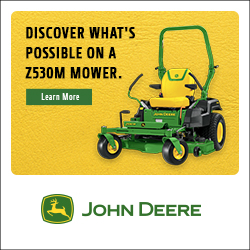Lawn Aerators: Does My Lawn Need to Be Aerated?
The key to a healthy, thriving yard is within your reach: Here’s what you need to know about aeration.
Any lawn fanatic knows that soil compaction—when your soil gets so dense it’s difficult for air, moisture, or nutrients to find their way through—can be a nightmare. It can also lead to a host of problems like preventing grass from growing and thriving, allowing water runoff (thus preventing soil from getting the moisture it needs), or causing soil erosion.
And, yes, it can even happen to the best of us from simple things such as the kids playing ball in the yard or your dog running in circles on her favorite spot.
Luckily, there’s an easy solution: aerating your lawn.
Shop This Story
What Is Aeration?
Aeration is the process of plugging hollow spikes into the soil and/or pulling out plugs of soil to create more breathing room. It’s that easy. But not every lawn needs to be aerated.
When to Aerate Lawn
There’s a simple test you can do to find out if your lawn needs to be aerated. Just probe moist soil with a screwdriver. If it goes into the soil easily, you may not need to do anything. But if you feel resistance, your lawn could be compacted and would benefit from aeration.
How to Aerate Lawn
If you have just a small patch of lawn that you need to aerate, a spading fork can work well. Simply push the tines into the soil at least 4 inches and rock the fork back and forth. To treat your whole property, you may need to rent a core aerator. These machines are available at many home and garden stores and equipment rental centers. But they are fairly heavy and bulky, so you may want to consider renting one with a neighbor or at least bringing someone along to lend an extra hand.
These machines feature spoon-shaped tines or hollow tubes that remove plugs of soil from your lawn. Make sure tines are spaced about 2 to 3 inches apart. Plan to go across your lawn twice, heading in a perpendicular direction for the second lap. After you aerate the lawn, proceed with reseeding any bare patches of lawn if needed or applying fertilizer or weed control products.
Lawn Aeration Products to Consider
If you decide you do need to aerate your lawn, here are some tools that may help.
Spading fork: This tool is hand-held helper for a smaller lawn.
Tines: These are hollow tubes that dig in deep and get your aeration on.
Core aerator: Rent or buy one if you have a larger yard that’s prone to compaction.
Fertilizer and weed control products: Don’t leave your aerated lawn hanging. These products give your soil the aftercare it needs.


